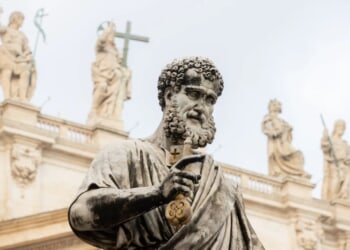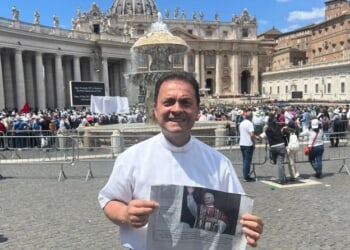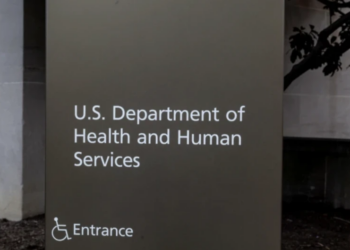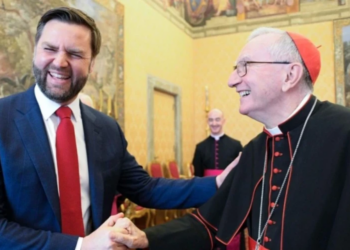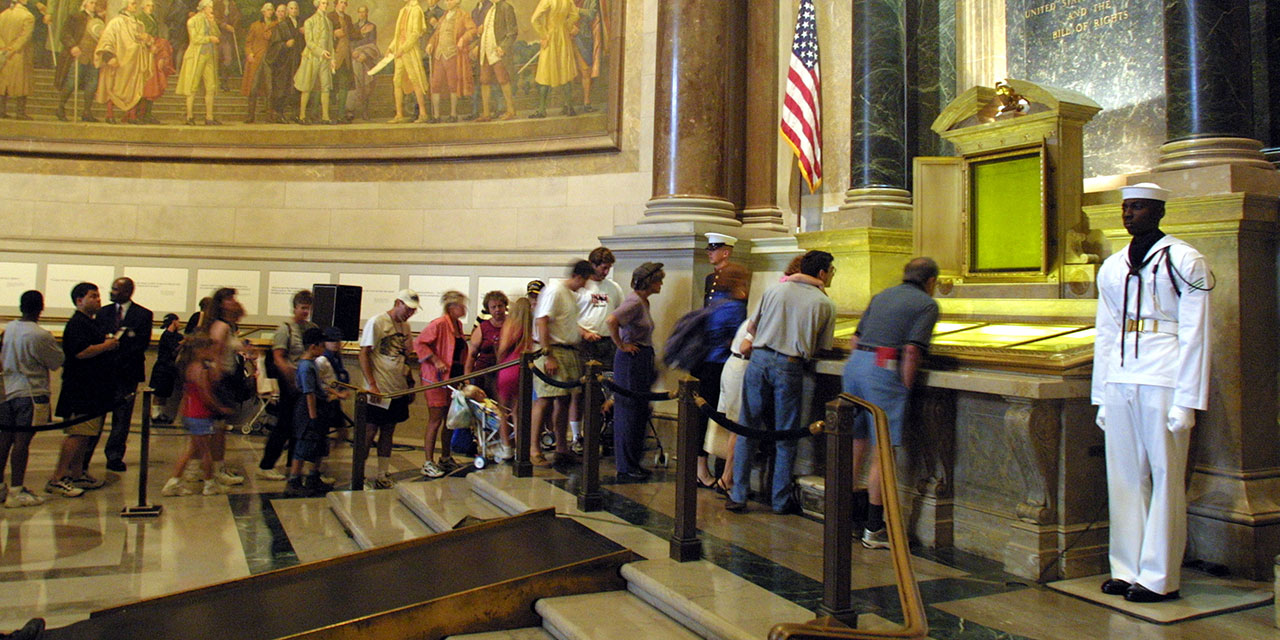
The following remarks were delivered at the Bradley Prizes ceremony on May 29 at DAR Constitution Hall in Washington, D.C.
We are gathered this evening at the beautiful headquarters of the Daughters of the American Revolution. Our European friends smile when they learn that one of the most conservative organizations in America is called the Daughters of the American Revolution. It is one of the ironies that goes with being an American, and an American conservative. We inherit a revolutionary tradition.
The historian Clinton Rossiter wrote a book in the 1960s titled Conservatism in America but subtitled The Thankless Persuasion. The United States is a revolutionary society, he wrote, constantly churning and changing, so that in this country the conservative is doomed to disappointment and defeat.
Finally, a reason to check your email.
Sign up for our free newsletter today.
And yet, in answer to the historian, the United States is governed by the world’s oldest and longest surviving written Constitution. Other advanced countries can make no such claim. All have been through several constitutional orders since our Constitution was ratified. America’s dynamic society and stable constitutional order are two sides of the same coin.
A character in a Benjamin Disraeli novel posed a question to a friend, who happened to be a conservative: What will you conserve? His friend was not sure how to answer. He had not thought about the subject. It is still a good question: What will we conserve? We, those of us gathered tonight, have answered it in different ways.
I have done so myself over a long career, leaning this way and that, emphasizing at different times one or another of the strands of thought that make up the tapestry of conservatism in America. Like the nation it seeks to preserve, American conservatism is an exceptional enterprise.
I began my career as an academic teaching at several institutions: Indiana University, the University of Minnesota, and the University of Pennsylvania, educating, or perhaps miseducating, many hundreds of undergraduates.
It was at Penn that I had my first real encounter with the Founding Fathers. I lived near Independence Hall, made frequent visits, and reflected upon what happened there 200 years before. I read about Jefferson, Madison, and Hamilton, none of them vagabond revolutionaries like Hitler, Lenin, or Robespierre, but accomplished lawyers, farmers, thinkers. It was a good thing they had flaws, unlike many of their critics today—after all, they were dealing with real-world problems.
Through that experience, I became something of a constitutionalist, afterward a conservative. This background, I thought, provided an answer to the causes taking root on campus: identity politics, attacks on the Constitution and U.S. history, disdain for free markets and business. Those causes advanced anyway and have continued to do so. I saw where things were tending—and so I moved on.
By chance, through the intervention of friends, I was invited to join the staff of a fledgling foundation, the John M. Olin Foundation in New York, with interests in conservative ideas, free markets, and academic programs promoting our heritage of liberty and limited government. This was in the early years of the Reagan administration. I knew little about the conservative movement, still less about charitable foundations. I learned quickly. I was fortunate to land where I did.
At that time, there was not all that much to what Heritage Foundation founder Ed Feulner called “the conservative movement:” a few think tanks, a handful of magazines, an academic program here and there. There were giants about, more so than today: Bill Buckley, Irving Kristol, Norman Podhoretz, Milton Friedman, and, of course, Ronald Reagan. But the ranks were thin. President Reagan had difficulty finding conservatives to staff his administration.
The John M. Olin Foundation was blessed with a board of farsighted and courageous trustees, business leaders all, and a dedicated staff of friends and colleagues. We had one virtue: we were aware that we did not know very much. Also: we had no clear plan. We took opportunities as they arose. We had no idea who was right—the free-market conservatives, the neoconservatives, the cultural conservatives, the national security conservatives, the new Right or the old Right. Not knowing any better, we tried to help them all. If they succeeded, then we stayed with them.
We had allies, fortunately. The Bradley Foundation was there with us as a reliable friend. So were some others: the Sarah Scaife Foundation, for example. But not many. The conservative movement was not awash in cash—far from it. That’s still the case today. The progressive foundations outspend us by a factor of 20 or 30 to one–maybe more. We were undaunted by the heavyweight influence of the liberal foundations. Since we had less money, we had to work harder, with greater focus and intelligence.
Most of all, we were blessed by those talented thinkers and writers, editors, scholars, activists, organizers, refugees from the 1960s–many of them former socialists–who approached us with their plans, seeking help and encouragement. In the 1980s and 1990s, they came in large numbers and from different directions, encouraged by real achievements—the collapse of Communism, the revival of the U.S. economy, welfare reform, even a balanced budget.
Charitable foundations cannot succeed without such people. We were lucky to have them. It was, in retrospect, a seedtime for the conservative movement, with new enterprises and people entering year by year, too many of them to count. Many are still thriving today.
The Olin Foundation closed its doors in 2005 on instructions from its donor: a 25-year adventure in conservative ideas. During that time, the conservative enterprise grew to such an extent that it could no longer be thought of as an insurgent movement, or even as a movement at all. There were elements in it, as some have said, that grew stale or stodgy. But it was now sufficiently broad and deep, with new people and organizations entering all the time, that it had the capacity to renew itself. And it has done so.
A few decades ago, John Micklethwait and Adrian Wooldridge, editors at the Economist, published a book called The Right Nation. The United States was exceptional, they wrote, precisely because of the strength of its conservative movement. Not only that: our brand of conservatism—patriotic, nationalistic, market oriented, skeptical of government—could be found nowhere else in the developed world. We were alone.
That may have been true then but it is not today. We find flourishing but quite different conservative movements around the world—in Argentina and Brazil, France, Italy, Great Britain, Germany, Hungary, and Poland—where new conservatives are pushing aside traditional and less energetic conservative parties. It appears that what happened here a few decades ago is now happening elsewhere.
These movements have evolved in ways we could not anticipate. They are more populist and antiestablishment than the conservative movements of past decades. Here, in the U.S., as conservatives awaited another Ronald Reagan, they were knocked sideways when Donald Trump came along.
Something similar is happening elsewhere, too. Perhaps we should not be surprised. After all, Bill Buckley’s early books in the 1950s sought to rouse the public against liberal establishments at Yale and in the State Department. Still, as a philosopher wrote: “Out of the crooked timber of humanity, nothing entirely straight was ever made.”
Much has gone wrong, even as conservatives advanced. As old problems were pushed aside, new ones emerged. The universities are worse. Public schools are worse. Washington is worse. Uncontrolled immigration has destabilized Western societies. The federal government sits atop a $37 trillion debt (with interest payments of $1 trillion per year and $9 trillion of U.S. Treasuries to be sold over the next year).
The nation faces a daunting agenda of problems. Progressives are unlikely to address them. In many cases, they are responsible for the problems in the first place. It will be left to conservatives to confront them. In short, there remains much work for the Bradley Foundation to do.
John Kenneth Galbraith said in the 1960s: “These without doubt are the years of the liberal; almost everyone so describes himself.” Few would say that today. If liberalism and progressivism were the advancing doctrines for much of the twentieth century, then conservatism may occupy that position in the new century. That is a singular achievement for an enterprise once described as “the thankless persuasion.”
Next year we will celebrate the semiquincentennial of the Declaration of Independence. This is where I came in, 50 years ago, in the midst of celebrations for the bicentennial.
I expect that these celebrations will be thought-provoking and will encourage Americans of all ages to embark on a journey to rediscover the nation’s roots. It is a journey well worth taking.
I hope the celebrations will be especially memorable for young people, many of them conservative in leaning though maybe unsure of their convictions, as I was when I was their age, so that in 50 years, when the nation marks its tricentennial and someone approaches them to ask that old question—“What will you conserve?”—they will have an answer ready at hand.
Photo by Alex Wong/Getty Images
Source link












